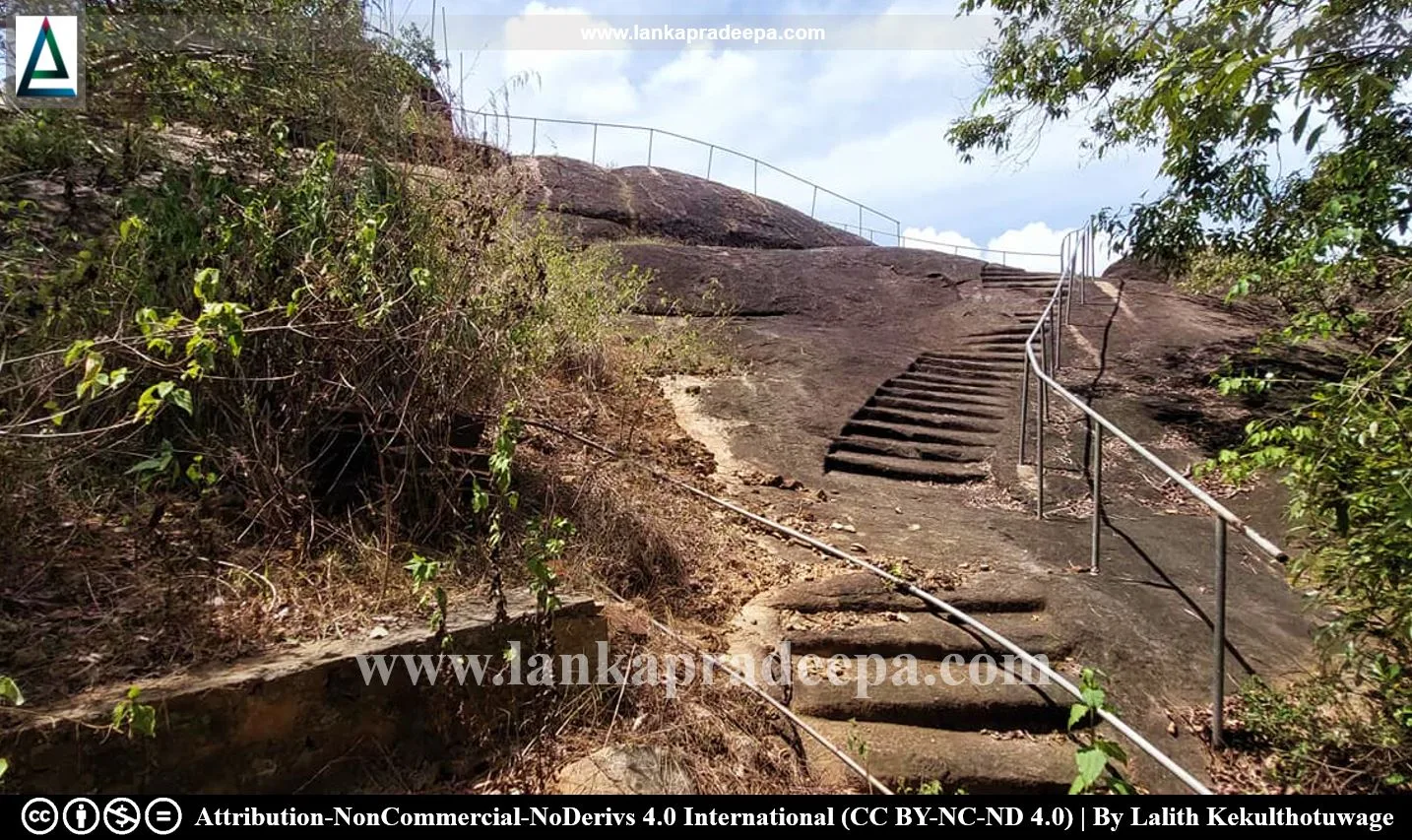
|
Vehera Benda Kutiya |
Vehera Benda Kutiya, also known as Kutiya Raja Maha Viharaya (Sinhala: වෙහෙර බැන්ද කුටිය, කුටිය රජමහා විහාරය), is a forest hermitage established around a small hillock in Srawasthipura near Anuradhapura town, Sri Lanka. The Kudarathmale inscription which is popularly called the Vehera Benda Gala rock inscription is found engraved on the top of the hillock of this temple.
Presently, the temple is surrounded by a forest of about 50 acres (Bambaradeniya, 2004).
History
The Vaharala-type (release from slavery) Kudārathmalē inscription reveals that the Buddhist monastery at this site was in existence since the 6th-7th centuries A.D. (Paranavitana & Godakumbura, 1963). It further reveals detailed information including the date, the month, and also the regnal year dated from the coronation of the king who effected the manumission (Paranavitana & Godakumbura, 1963; Wickramasinghe, 2005).
Kudaratmale Inscription

Period: 6-7th centuries A.D.
Script: Later Brahmi
Language: Old Sinhala
Content: The record registers the manumission of a ‘priest’ (pävji) named Sidhattha by some officer with police duties (arakalayi) paying 100 Kahavana.
Notes: The king here is mentioned with his adopted epithet, ‘Siri Sangaboyi Abayi’ followed by his real name, which is very fragmentary.
Reference: Wickramasinghe, 2005
The site hidden in the wild for centuries was discovered again in the 1990s by a Buddhist monk named Welisara Jinawansha Tissa Thera. He re-established and re-developed the site with the help of government officials and lay devotees.

Related Posts
Read Also
References
Books, Journal Articles
1) Bambaradeniya, C., 2004. Status of Biodiversity in the Vehera Benda Kutiya temple forest in Anuradhapura, Sri Lanka.
2) Paranavitana, S., Godakumbura, C.E., 1963. Epigraphia Zeylanica Volume V, Part I. Archaeological Survey of Ceylon. pp.30-34.
3) Wickramasinghe, C.S., 2005. Slavery from known to unknown: a comparative study of slavery in ancient Greek poleis and ancient Sri Lanka. BAR Publishing. pp.85,106.
Location Map
Dynamic Google Map
Attribution
To Whom
LankaPradeepa.com extends its gratitude to Mr Lalith Kekulthotuwage for providing the necessary photographs required for this article. All the photos are published here with the permission of the author.

